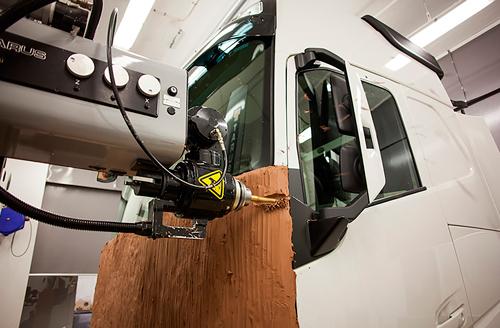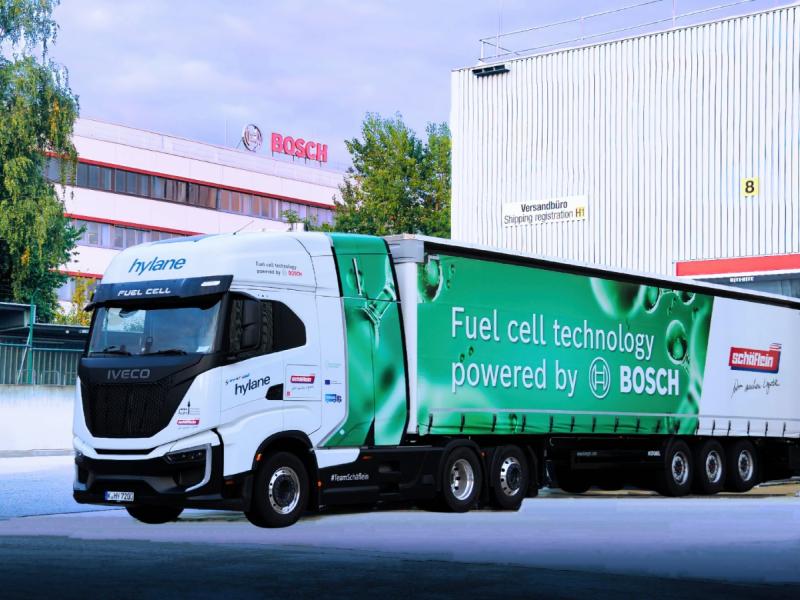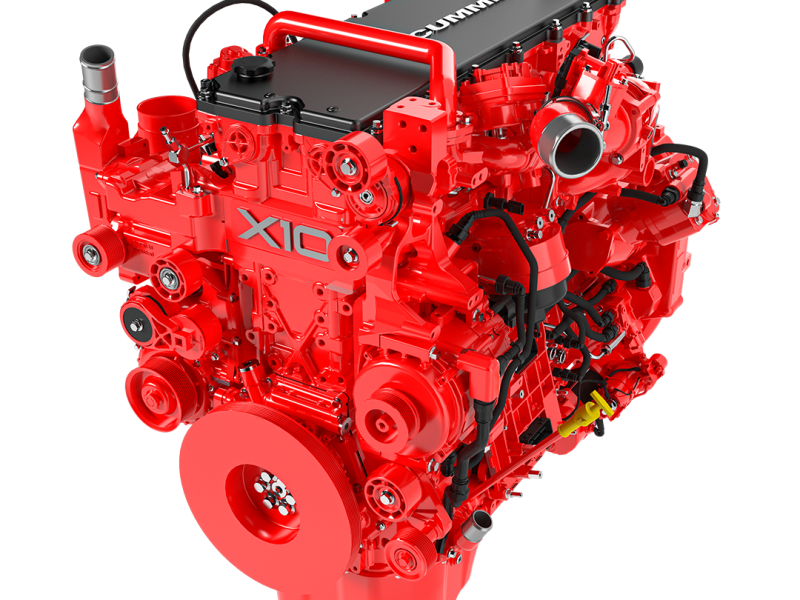The process of developing a new truck starts many years before it is launched. During that time a lot can change, which requires insight into the future to develop a design that is not only timely on its arrival, but is also considered innovative.
“We started working with the new Volvo FH back in 2006,” says Rikard Orell, design director at Volvo Trucks.
“Back then no one had heard of the iPhone. Yet when the Volvo FH was launched in 2012, Smart phones were suddenly an integral part of society. We must be able to predict this kind of change.”
Comprehensive business intelligence is an important part of the design process, in order to predict how society will develop five, ten and fifteen years into the future. This includes everything from interviewing drivers to investigating trends within technology and culture.
“Within the transportation industry, product cycles are longer than in other industries. Since we are an industry leader, we have great responsibility in influencing development so that it takes a sustainable direction,” says Rikard.
A year ago, Volvo Trucks completed the biggest launch in the history of the brand. Six new truck models were launched in less than a year. Each model has three design features in common: the iron mark, which now has a more prominent position just under the windscreen, the larger honeycomb-patterned grille and the V-shaped headlights.
However, the biggest challenge for the design team was to express the differences between the various models.
“Our new truck series is like any family. It consists of individuals with their own personalities. It is in these differences that the series’ real strengths lie. For us it was a matter of creating a unique personality for each model which suits its purpose, usage and working environment,” says Rikard.
“When developing the new truck series, there was therefore a strong focus on visualising the specific working environment for each model. The use of inspirational images has been an important tool during this part of the design process.”
“It is a traditional design technique which helps us capture the essence of what we want to express,” says Asok George, chief of exterior design at Volvo Trucks.
“In our industry, it is especially important because we are creating a complex product which is often both a workplace and a home. We have to consider technical and legal requirements and also exceed customer requests.
“It is a difficult task, but since designers think visually, we use inspirational images to stimulate our creative process.”
The desired expression and personality of each new model were represented in the process by a number of images. For Volvo’s flagship Volvo FH16, one of the pictures was a herd of wild horses.
“The Volvo FH16 is the world’s most powerful series-produced truck, and should naturally convey power, but at the same time we do not want it to look aggressive. Rather, it should express its power in a refined manner. The grace of wild horses is a great inspiration – they express their strength and freedom in an elegant way,” says Asok.
The inspiration board for the new Volvo FMX mixed images of harsh environments and sustainable materials. The end result is a truck that is robust both inside and out.
“The image of James Bond describes the new Volvo FMX personality well. Agent 007 looks great in a tuxedo, but he is also equally attractive after having been in a fight. The same goes for the new Volvo FMX, it must look cool even after taking a couple of hard knocks,” says Asok.
Another aspect of the work is about understanding and incorporating legal requirements into the design process, which also has to do with the functionality of the truck.
“The large grille on the new Volvo trucks looks like it does for a reason. Its design provides the new trucks with a distinctive family identity, but above all it has been shaped in a particular way because the Euro 6 engines need more air. So the fact that our trucks are now more environmentally efficient has dictated the nature of the design,” he adds.
When a clear vision for the entire range was defined, the next challenge was to realise each model, taking into account all the technical constraints and manufacturing requirements without losing the original vision.
“We started sketching our new truck series back in 2006, and these vehicles will be seen on the road for many more years. This places great demands on our ability to visualise the future. So yes, design is about creativity and also about bringing a desirable future into reality. It is a methodical craft that is based on knowledge and understanding of our customers and of the wider community,” says Rikard Orell.
reader reply 01411234






